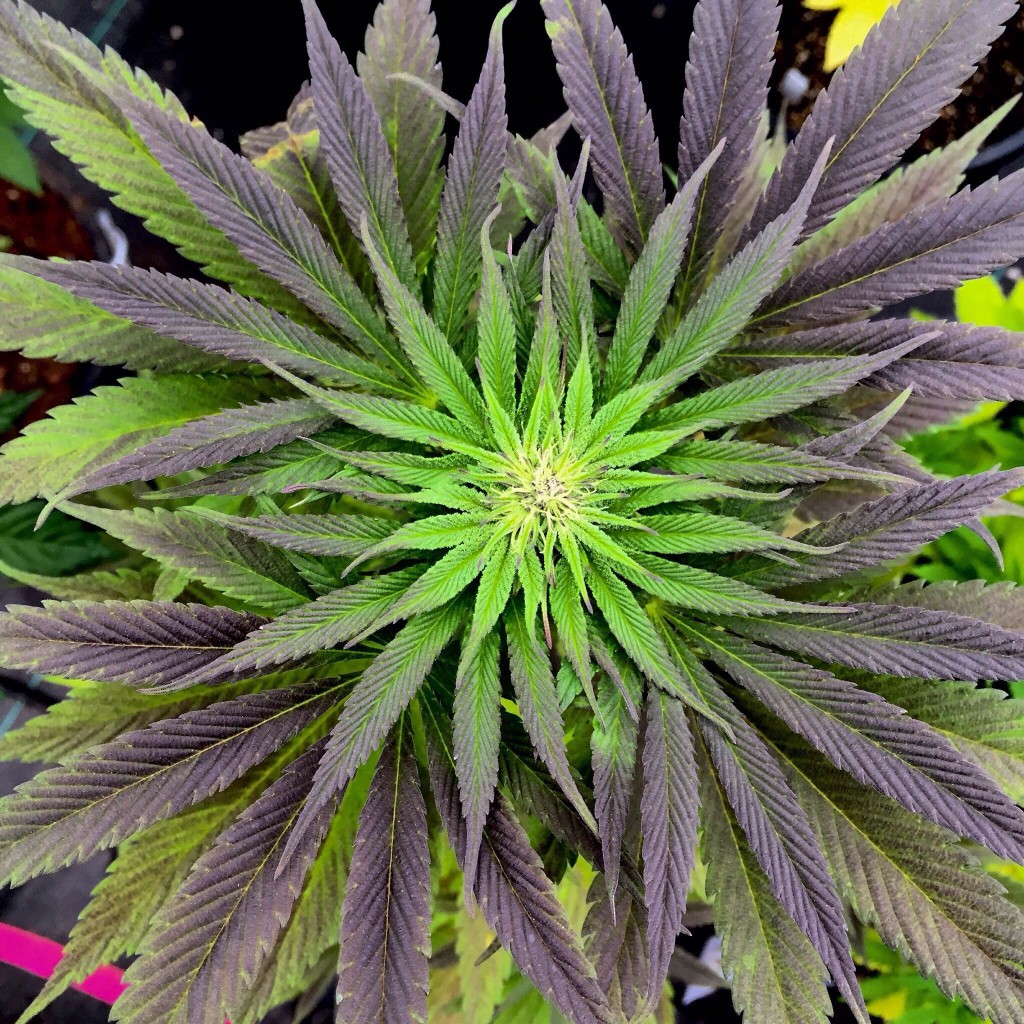Royal Purple Kush, Grand Daddy Purple, Mendocino Purps, and Purple Urkle (to name a few) are well known purple strains. The purple coloration comes from the presence of Anthocyanin which is a flavanoid produced by an enzymatic process in the plant. This phenomenon is caused by the occurrence of something known as anthocyanin accumulation which causes anthocyanin to build up within plants. Anthocyanins are known to be powerful antioxidants, and are also thought to possess analgesic, anti-inflammatory and neuroprotective properties. This why we are told to eat blueberries, blackberries, and goji berries which all are said to have this anti-oxidation characteristic. While chlorophyll is what gives cannabis and plants in general their green color, anthocyanin is what makes cannabis purple, and carotenoid is what will make cannabis yellow or gold. These are usually associated with Autumn leaf coloration. The reds, the purples, and their blended combinations that decorate autumn foliage come from anthocyanins. Unlike the carotenoids, these pigments are not present in the leaf throughout the growing season, but are actively produced towards the end of summer. As the days shorten and hours of darkness increase, photoperiod-dependent plants are given the signal to cease producing chlorophyll (which is essential for photosynthesis and vegetative growth), so that energy can be focused solely on producing flowers and ultimately fruits. As chlorophyll breaks down and dissipates from the structures of the plant, and anthocyanins begin to accumulate, the plant takes on vivid purple, blue and red hues. Some strains of cannabis, like the strains listed above will turn purple without such a drastic drop in temperatures. If your plant has the genetics which make it prone to anthocyanin accumulation, you can make it turn purple by dropping the temperatures in the growing environment down below 50º Fahrenheit when the lights are off. Although its never wise to have more than a 10º difference in high/low temps, this juking of the climate cycle can have interesting results. It can be expected to have a loss in growth when temp cycles range to far low, the gain in coloration or jar appeal can make the experimentation worth it. Just recently, in one of our Washington State I502 greenhouse projects, temperatures dropped dramatically at night. Due to some shipping problems there was a delay in receiving our propane heaters. Because of that delay in regulating night time temperatures, we experienced some dramatic color changes during the cold nights. Strains like Dedoverde Haze and Glazed Cherries, that we don't normally see change to darker hues, brought on rich purples and dark burgundy reds. This surprising color change caused questions and the search for answers to why and how these abnormal color changes came about, which brought upon the inspiration for this article. Sometimes accidents can reveal aspects we had no idea were just a few degree points away. - Blog post via Master breeder @KiefxSweat






Great article very interesting thank u for shareing it with us
Can purple be caused by a phosphorous deficiency as well? Sugars from photosynthesis accumulate in the leaves due to a breakdown of a transporter protein that uses phosphorous?
kid - email ras@humboldtseeds.net
What is the process to getting my own strain licenced thru you guys?
I have found too much purple cause me oral inflammations. Don't know why but it is something I have noticed over the years so now I avoid too purple stuff.